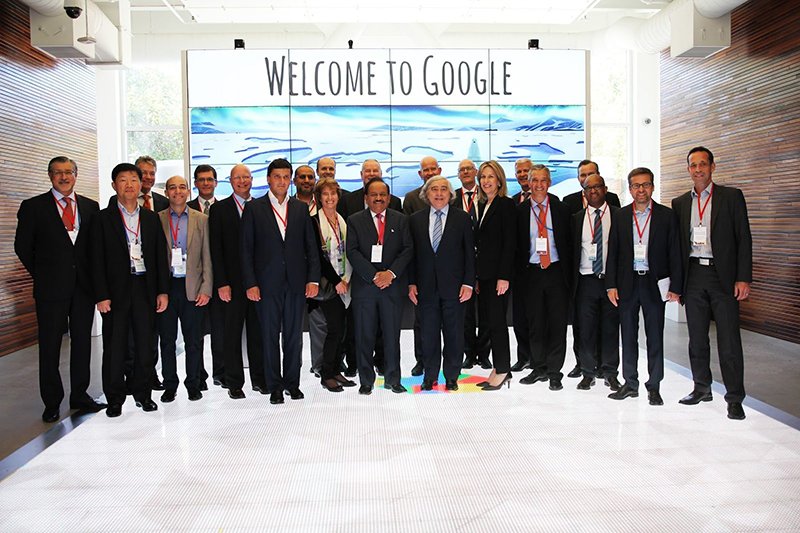Author Archives: Mars Hanna
Innovating for a cleaner energy future
A number of ministers embarked on a fact finding mission that included Google where they came to learn at first hand about our approach and commitment to clean energy and the climate.
Senior Vice President for Technical Infrastructure Urs Hölzle told the group that renewable energy is critical for businesses like ours — from powering our data centers to our products and services.
“Having pioneered some of the first corporate renewable power purchasing back in 2010-2011, we’re excited to see that this is becoming business-as-usual for companies everywhere. And at Google we continue to be committed to 100% renewable energy because this makes good business sense and is the right thing to do for the planet and for our users.”
The group got the opportunity to see at first hand a number of projects aimed at everything from helping people make smart choices about solar power to how we power our data centers with renewable energy, and from advancing new approaches to wind power to helping consumers save energy in the home and the benefits of self driving cars.
Self-driving cars could reduce the energy intensity per vehicle through a combination of more efficient vehicle designs, driving behaviors, routing, power usage, and capabilities for vehicles to drive closer to each other, according to U.S. Department of Energy, 2014.
In an effort to build on this week’s momentum the CEM launched a campaign that will promote solutions that enable more companies to purchase renewable power. As part of this effort, Google has agreed later this year to host national governments, renewable energy buyers and suppliers, NGOs, and other interested groups as they look for ways to further unlock corporate renewable energy demand in CEM countries.
Source: Energy & Environment
Laying the foundation for renewable energy certification programs in Asia
Source: Energy & Environment
Laying the foundation for renewable energy certification programs in Asia
At Google, we’ve made a long term commitment to power 100% of our operations with renewable energy. To that end, we’ve purchased more than 2 gigawatts of renewable energy to date, making us the world’s largest non-utility purchaser of renewables.
Our data centers – including our facilities in Taiwan and Singapore that help us provide people in Asia with faster, more reliable access to our tools and services – make up the majority of our electricity consumption. We are working to power all of our data centers around the world with renewable energy, but one of the challenges we face in Asia is that effective renewable energy certification programs simply aren’t available.
To help address this, we’re announcing today that we’re providing seed funding to theCenter for Resource Solutions (CRS) to begin laying the groundwork to establish such programs across Asia, starting in Taiwan. They have over 20 years of experience developing and operating renewable energy certification programs.
These kinds of programs are key in helping companies like Google actually know that the power we are buying comes from a renewable source. They work by “tagging” each MWh of energy generated from a source like wind or solar as renewable, which creates a renewable energy certificate (“REC”). This is especially important to us in Taiwan, where we are actively looking to purchase renewable energy for our data center.
The video below from CRS explains how this works for some customers. In Google’s case, we buy both the physical power and the RECs associated with that power, providing us with both the financial benefits of renewable energy and the assurance that the electricity we are buying is in fact renewable.
It may not sound like much, but these programs are critical to creating well-functioning voluntary renewable energy markets. For the dozens of Fortune 100 and Global 100 companies that have renewable energy commitments, RECs are a critical instrument to ensuring that renewable energy purchasing claims are accurate and verifiable. They have played a key role in enabling companies in the United States to grow their renewable energy purchasing from about 100 MW in 2012 to over 3,000 MW last year.
With this support from Google, CRS will begin examining how best to structure these programs across Asia to create robust voluntary renewable energy markets. They will also begin building a coalition of international stakeholders from the public, private, and NGO sectors to drive these efforts forward.
Organizations interested in supporting these efforts may get more information here.